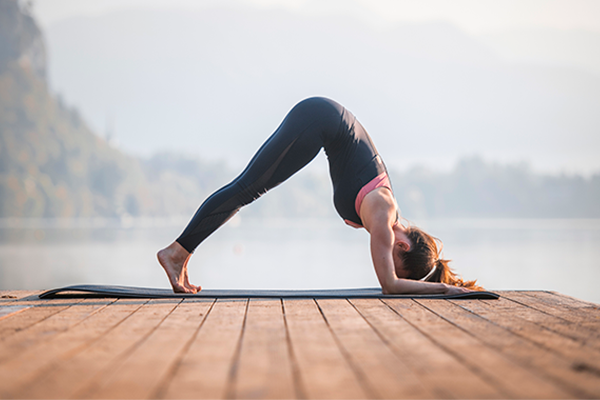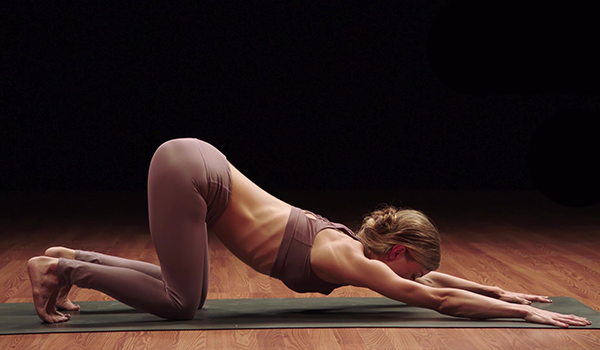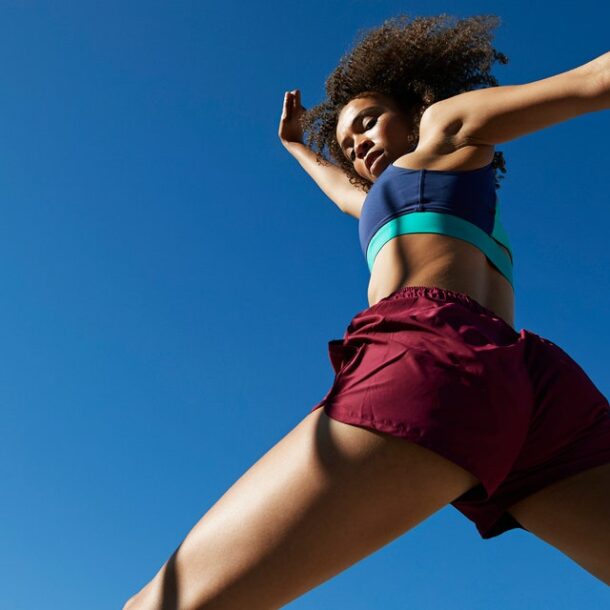You’d be hard-pressed to find a yoga class without at least a few downward facing dog, and upward-facing dog poses, and that’s for a good reason. Appropriately done, foundational poses help fire up your whole kinetic chain, making them ideal bodyweight exercises.
But if you’re looking to spice up your foundational poses, throw in a dolphin plank to intensify your down dog and upward facing dog during chaturanga dandasana.
Here’s how to get seaworthy.
Dolphin Plank: Step-by-Step Instructions
- Start on your hands and knees, placing your knees directly below your hips, and your wrists directly below your shoulders.
- On an exhale, lower your forearms to the mat, keeping them parallel and aligning your elbows below your shoulders. On an inhale, tuck your toes, and lift your hips toward the ceiling.
- Keeping your shoulders over your elbows, gently let your head drop, walking your toes slightly forward. Eventually, lower your heels closer to the mat.
- Work on making this a dynamic move by walking your feet back so you’re in a forearm plank and then walk back in to a dolphin plank, making sure to keep abs engaged throughout.
Try not to allow your shoulders to go forward past your ears, suggests yoga teacher and trainer Samantha Parker, E-RYT, CPT. If your shoulders are too far up toward your head, it can cause the shoulders to rotate and stress the tissue in the rotator cuff, she says.
Another way to avoid misalignment is to keep the weight of your body shifted back toward your legs and heels.
Benefits of the Dolphin Plank Pose
In addition to perks like stronger shoulders, back, and core, the dolphin plank also brings the advantages of getting you a little upside down, in what yoga teachers call an “inversion.” According to Parker, inversions are beneficial because of their:
- Improvement to your circulation, especially in terms of blood flow to the brain.
- Stimulation to the endocrine and nervous system.
- Improvement of vestibular stimulation, which gives you a better sense of balance.
- Boost to proprioceptive abilities (being more aware of how your body is operating), which allows your muscles and joints to work more effectively together.
- Increased traction (create space) in the cervical spine. Increased traction in the cervical spine is excellent because overtime gravity and the weight of the head help decrease distance between the vertebrae in the neck.
- Ability to help you relax. The activation of the parasympathetic nervous system enables you to feel better. Even though your body is working super hard, you are still countering stress.
Dolphin is also considered a prep pose for progressing into forearm stands, headstands, and handstands. You’ll be building the balance and flexibility you need to draw your legs up eventually.
This plank variation isn’t just for yogis, either. It’s a great move to incorporate some big-time muscle building into any routine, according to Parker.
“Dolphin helps to stretch the shoulders, spine, legs, hamstrings, and calves, but also helps to strengthen the same muscles, especially the shoulder and abdominals,” she says.
Dolphin Plank Variations
There are a few ways to make the pose easier and build up to more advanced versions, as well as dial-up the challenge level. Here’s an idea for each:
Modify: In a move called the puppy pose in yoga, you can bring forearms to the ground but keep your knees in contact with the floor. Lift your hips toward the ceiling. Feel the deep stretch in your arms and shoulders.
In this position, Parker suggests drawing knees closer to elbows to build strength slowly.
Increase the challenge: From your dolphin plank, work on raising one leg while still keeping the hips level. Lifting one leg will fire up your core even more as it engages to keep you stable.
You can also do dolphin plank taps for an added core strengthening challenge.
For dolphin plank taps, step one leg out about a foot to the side, tapping the mat with your foot. Pull your outstretched leg back in, and then repeat the motion on the other side.





